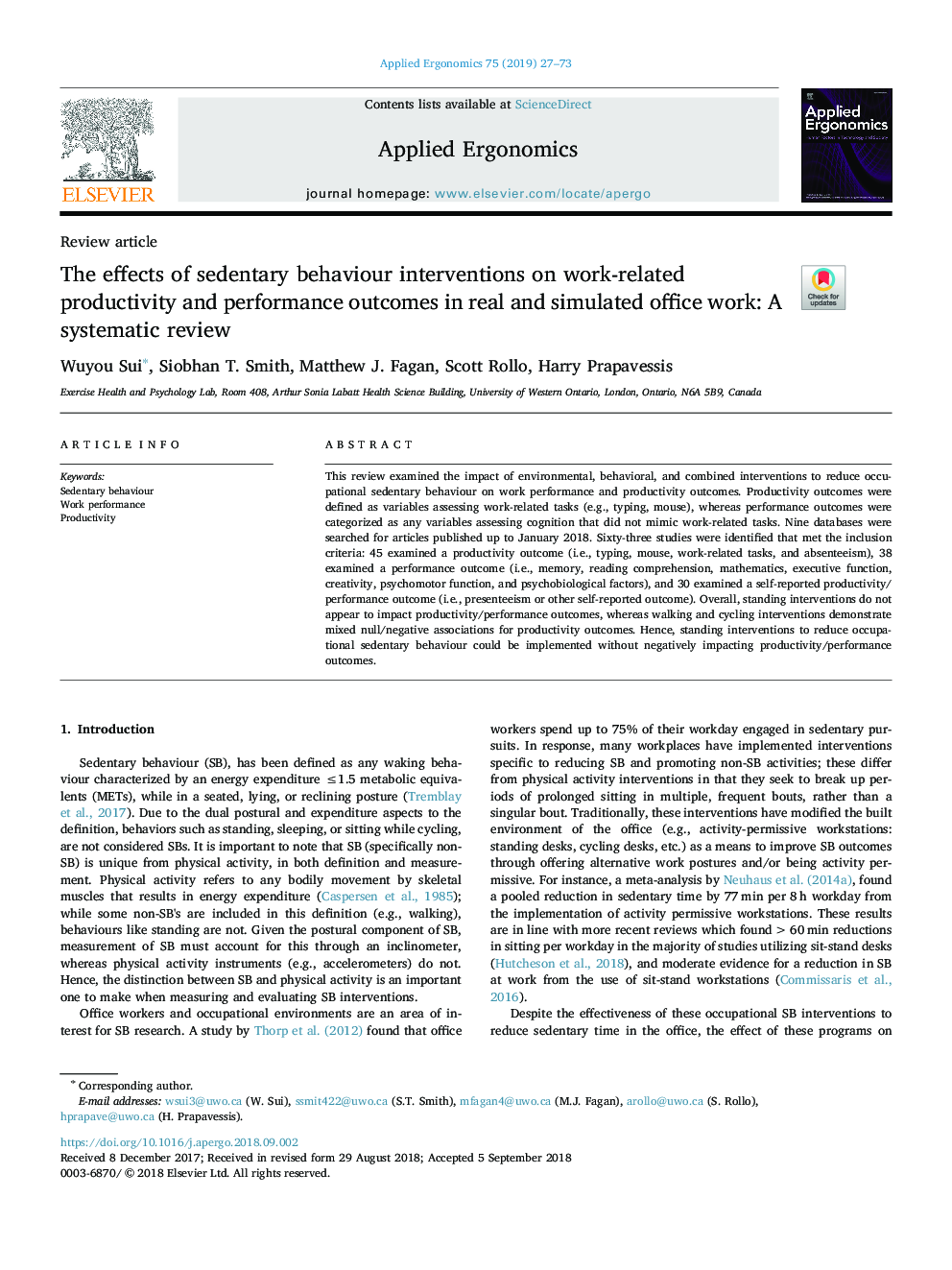| Article ID | Journal | Published Year | Pages | File Type |
|---|---|---|---|---|
| 10151527 | Applied Ergonomics | 2019 | 47 Pages |
Abstract
This review examined the impact of environmental, behavioral, and combined interventions to reduce occupational sedentary behaviour on work performance and productivity outcomes. Productivity outcomes were defined as variables assessing work-related tasks (e.g., typing, mouse), whereas performance outcomes were categorized as any variables assessing cognition that did not mimic work-related tasks. Nine databases were searched for articles published up to January 2018. Sixty-three studies were identified that met the inclusion criteria: 45 examined a productivity outcome (i.e., typing, mouse, work-related tasks, and absenteeism), 38 examined a performance outcome (i.e., memory, reading comprehension, mathematics, executive function, creativity, psychomotor function, and psychobiological factors), and 30 examined a self-reported productivity/performance outcome (i.e., presenteeism or other self-reported outcome). Overall, standing interventions do not appear to impact productivity/performance outcomes, whereas walking and cycling interventions demonstrate mixed null/negative associations for productivity outcomes. Hence, standing interventions to reduce occupational sedentary behaviour could be implemented without negatively impacting productivity/performance outcomes.
Related Topics
Physical Sciences and Engineering
Computer Science
Human-Computer Interaction
Authors
Wuyou Sui, Siobhan T. Smith, Matthew J. Fagan, Scott Rollo, Harry Prapavessis,
